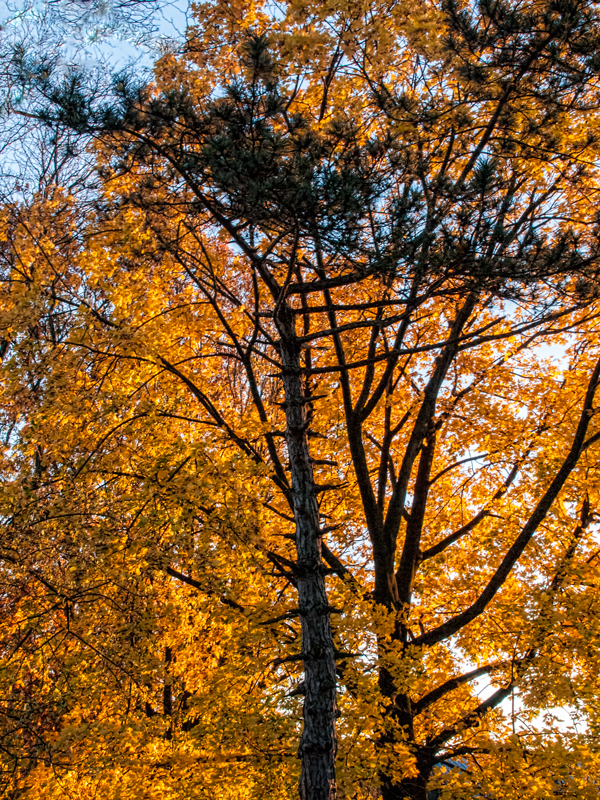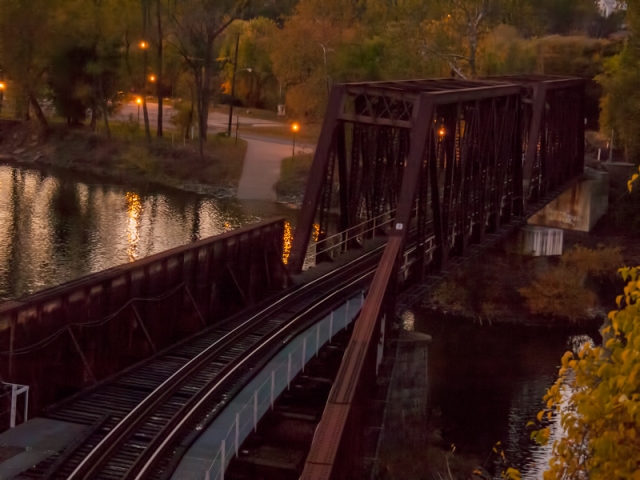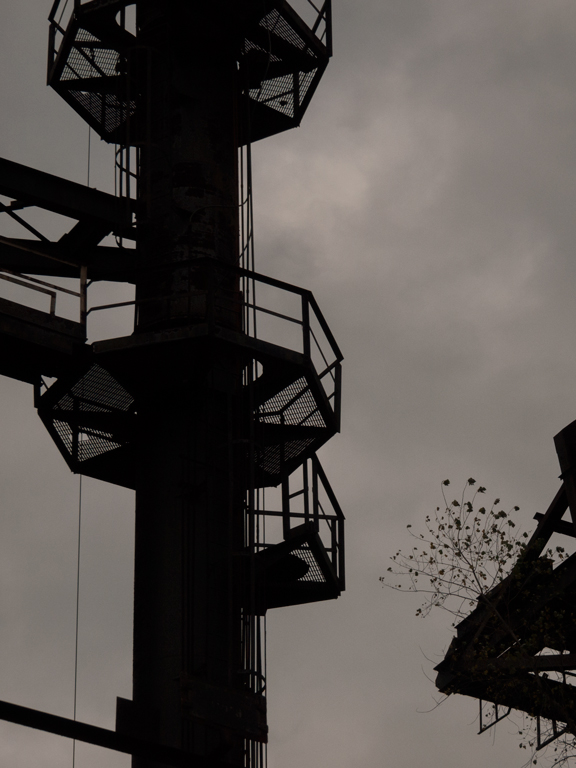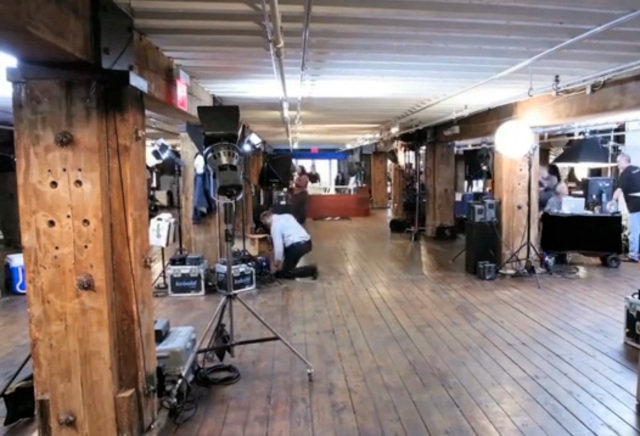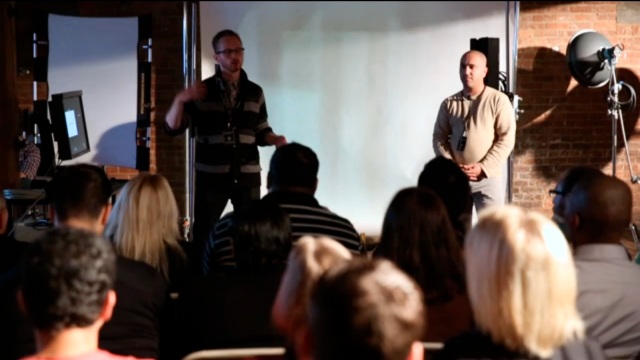Lehigh River with Bethlehem Steel Factory at Sunset
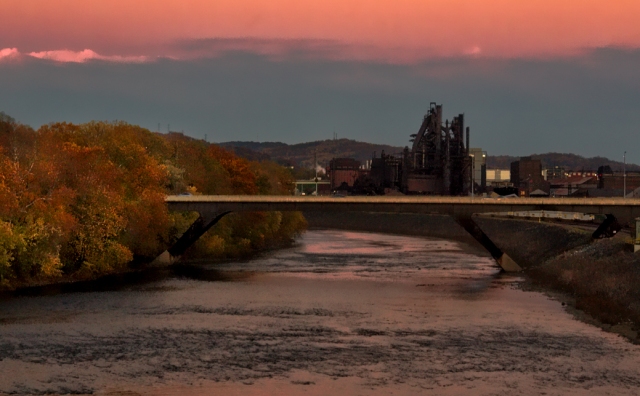
The Invision conference in Bethlehem has evolved into that rarest of opportunities for photographers – a confab combining inspiring presentations by photographers, well curated exhibitions of work, and a chance to interact with local photographers in a friendly, unpressured way. It started four years ago as special event sponsored by ArtsQuest, a local group that sponsors several festivals, notably MusicQuest, and hundreds of events across the arts from film to music to pottery, catering to all ages and interests. The festival largely took place at the SteelStacks, ArtsQuest’s marvelous facility on the grounds of the abandoned Bethlehem Steel factory. Olympus, in an encouraging move, has taken on co-sponsorship of the festival, which takes place just a few miles from their US headquarters.
I had a Sunday obligation, so I arrived in the Lehigh Valley, a quick drive from Philadelphia, on Friday. The weekend kicked off with a reception at the Banana Factory, a combination galley and arts workspace in South Bethlehem. Winning work from the student and Pennsylvania photographer contests occupied galleries and hallways, and artist in residence Gene Richards’ photos were displayed in marvelous 20×30 black and white prints in an exhibition. One room was dedicated to Olympus Visionaries and Trailblazers, and I saw local portrait Victor Rodriquez, who will be appearing at my club next year. The Santa Bannon gallery, located in the same building, hosted talks by several of her photographers.
I had always wanted to meet Richards. I used to sell Aperture books to bookstores, so I spent a lot of time during the early nineties introducing book buyers to challenging work like Cocaine True, Cocaine Blue and Americans We. Richards was cordial and available at the reception, and I was able to introduce myself as someone who peddled his work, which delighted him.
The publishing model for expensive books has changed over the past few years, with online sales producing a huge differential between what a bricks and mortar retailer can charge and what a consumer pays online. Contrary to what the talking heads will tell you, the lower prices have not created greater sales, as many illustrated books must be seen and handled to be fully appreciated. Richards and his engaging wife and creative partner, Janine Altongy, have used a crowd-sourcing strategy for his latest works, which include books and some short videos.
Having talked about his books for years, I was anxious to hear what he had to say. His talk the next day did not disappoint. Full of warmth and zeal, illustrated by striking photos and short form videos, the low key photographer’s presentation created a high profile impression. His experiences with African villagers, drug addicts, mental patients produced photographs with an unmediated, intimate viewpoint that illuminates not just their plight but their manifest virtues. Right after I got home from Bethlehem, I read a shallow editorial that dismissed most documentary photography as “white guy photography,” incapable of rising above its makers’ privilege and inherently condescending. While purporting to deride projects that lack context or social value, such an article serves little purpose, somewhat like attacking photos of children and cats because they exploit sentimentality and cuteness without being artful or advancing a cause. Turn the page, buddy. Five minutes with Eugene Richards will convince anyone that probing communities and people under stress is a situation where “privilege” vanishes. The currency becomes not status or cash but rather conviction and trust. Creating moving photographs in those places and times requires perseverance, empathy, vision – humanity.
The other talk I attended was Chase Jarvis. I have become a big fan of his pet project, CreativeLive, a free stream of webinars and demonstrations he founded in Seattle. Jarvis makes an interesting contrast with Richards. Jarvis exudes a high energy persona, and he revels in having built a successful commercial photography business and having access to big names in entertainment. He strikes me as more a director than a pure artist; he knows instinctively how to assemble talent and get results, but I doubt anyone will mount a retrospective of his photography in 50 years. He started by reading a short bio of Ansel Adams, who surprisingly practiced the same sort of active photographic life – playing at parties, assembling talent, distributing his work widely for cheap – even though we know him now primarily as an artist. Jarvis’ diverse projects involve photographing movers and shakers in Seattle, assembling musicians and poets for dinners, and of course CreativeLive. Like Richards, he was very generous with his time. His ability to catalyze artists and promote photography among arts is unmatched. His social commitment was very different from Richards but equally valuable.
Next year, I will stay the whole weekend. As an Olympus shooter, I enjoyed seeing the new gear and speaking to the techs, the marketing people, and of course, the top pros who use Oly. The folks I stayed with bed and breakfast were marvelous hosts, and I find a Bethlehem a congenial and photogenic venue – more shots below.

